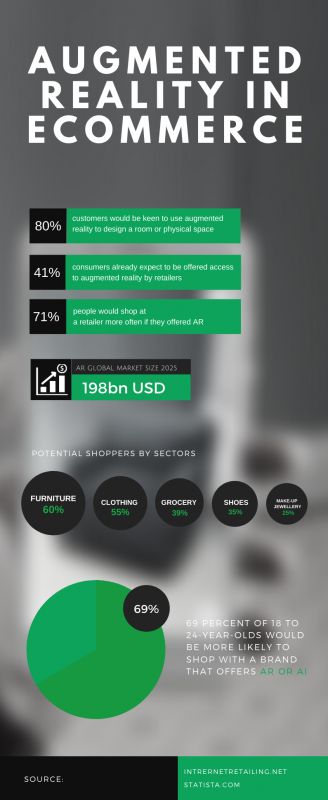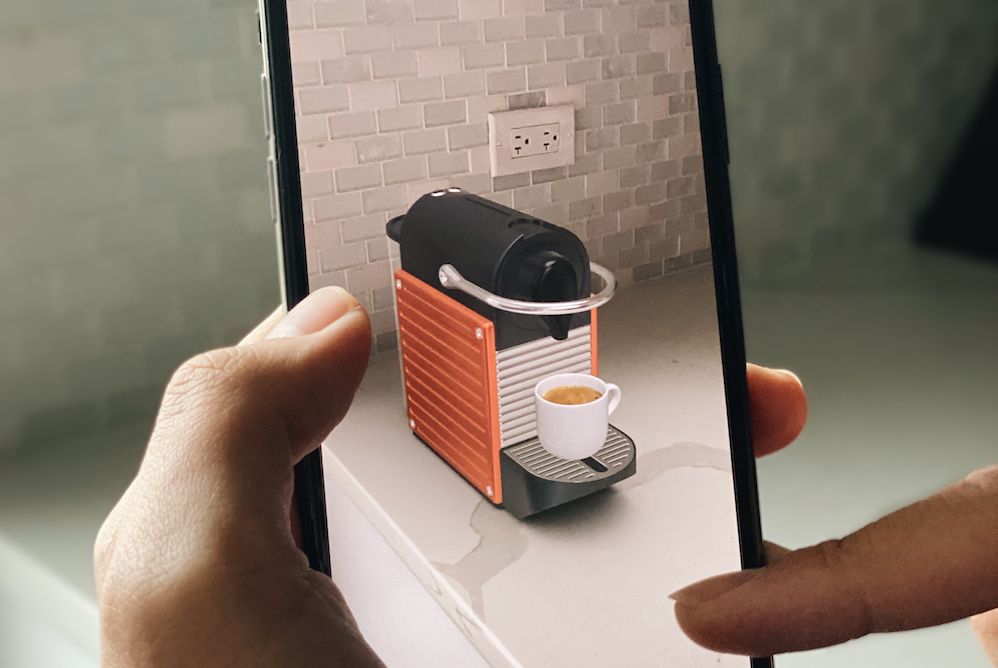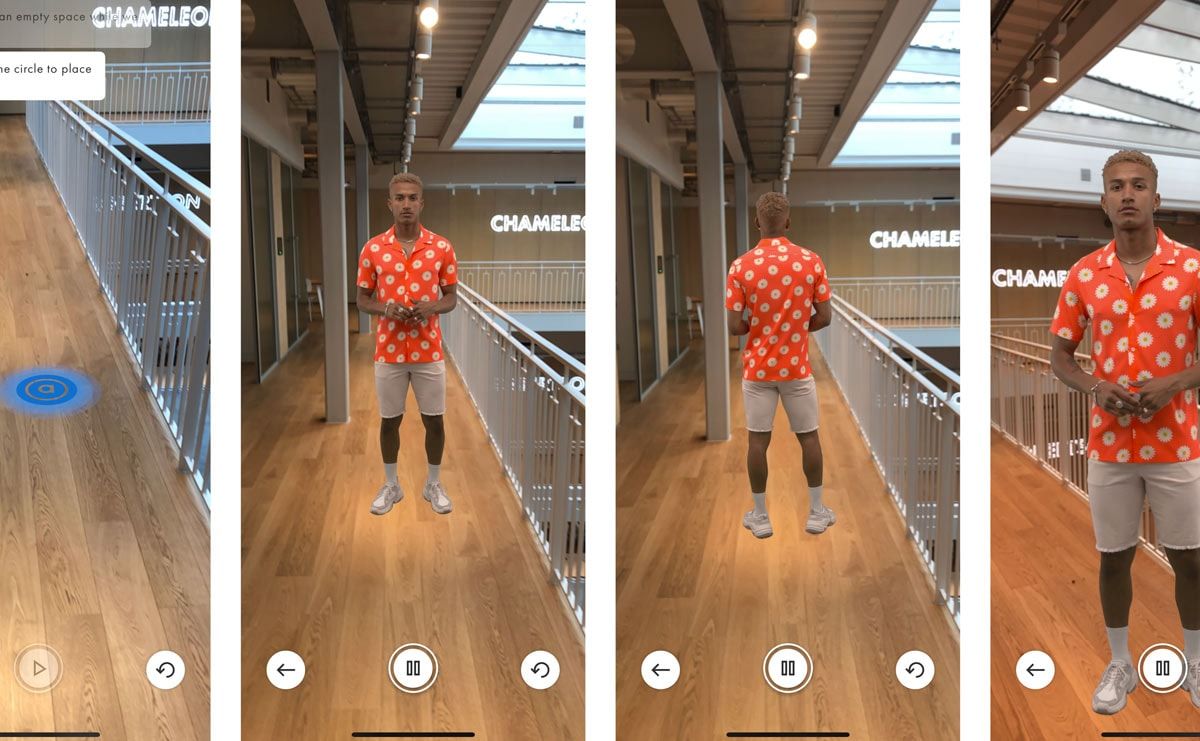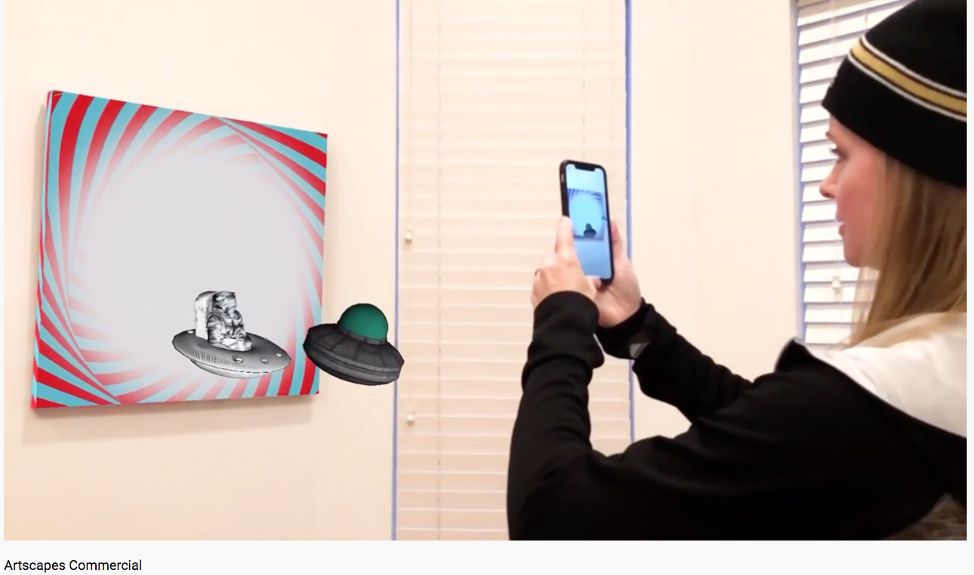Over the past few weeks businesses have been working rapidly to get their products and services up and running online, enabling people to access them always and everywhere.
In this environment, when everyone is learning the ropes of 100% digital operation, it’s no wonder that e-commerce stores are struggling with the need to build corresponding digital infrastructures that benefit the emerging market conditions.
To come out as a winner from this unprecedented turn of events, you as an e-commerce store need to differentiate yourself from your competitors by implementing creative methods of improving your customer experience through the channels your customers use.
Brands and retailers, who have a firm grasp on how to utilize the digital universe, have applied many strategies to maximize their reach and impact. However, there’s a new player in the game — augmented reality — and it is here to disrupt the way e-commerce has functioned so far.
I have contacted some of the industry’s top business thinkers to get insight into how augmented reality can help mitigate the challenges of today’s e-commerce stores. Here are some of those crucial questions, answers and takeaways.

What is the biggest challenge facing e-commerce today from a UX perspective?
Many of the challenges that e-commerce stores used to face decades ago have been remedied with the use of advanced technologies (e.g. marketing automation, mainstream payment systems, visual search, live chat solutions, omnichannel realities), but the biggest challenge of e-commerce — the lack of tangibility — still persists.
“The human desire to feel and touch goods, try them on, see them in the environments they’ll end up in if purchased — it’s not going anywhere,” said Ivan Kot, Senior Manager, Itransition. “It’s the way our brain works: the more abstract and divorced from reality something is, the less real it feels for us.”
The human desire to feel and touch goods, try them on, see them in the environments they’ll end up in if purchased — it’s not going anywhere.
High-quality images or videos cannot bridge this gap because they can’t give customers a three-dimensional feel or ‘form factor’ about how a particular product will fit into their lives.

This is the entry point for augmented reality. As the name suggests, it augments a person’s perception of reality by adding a digital layer to the real world.
AR brings the products’ 3D models into our actual physical environment, where we can interact with them in real-time (zoom, rotate, customize) and get their “real” feel.

Why is AR important in e-commerce?
First and foremost, AR is the only technology that breaks the digital barrier between customers and online stores. It is revolutionizing many aspects of e-commerce: art, furniture, apparel, cosmetics and more.
“The magic of AR is that it puts products in context: try an art piece on your own wall, a shed in your backyard, a watch on your wrist,” said Nicolas Robbe, Co-founder of Hoverlay. “It removes cognitive load and risk for all the decision-makers involved.”
The magic of AR is that it puts products in context: try an art piece on your own wall, a shed in your backyard, a watch on your wrist.
The ability to easily try an art piece on your wall and assess its aesthetic and size in the context of your space is radical.
What’s even more radical, however, is bringing that piece of artwork to life with visual storytelling in 3D and increasing its aesthetic value.
Tens of thousands of art pieces have been transformed into “digital twins” by physical art galleries like International Poster Gallery in Boston, or online galleries like Art Lovers Australia and ARtscapes.
For example, ARtscapes sells pieces of art that evolve.

AR also makes online shopping fun and engaging, creating a strong emotional connection between brands and audiences.
“One of AR’s biggest strength is that it adds fun [and] interactivity, ‘gamifies’ the experience, and engages customers,” Kot said. “It’s basically the next best thing after being actually able to touch and see the product in real life yourself.”
One of AR’s biggest strength is that it adds fun [and] interactivity, ‘gamifies’ the experience, and engages customers.
But AR’s importance is beyond excitement and interactivity. In the long-run, it is also about a smoother and more intimate customer experience that is unrestricted by working hours.
“Soon, computer vision algorithms will be so advanced that all physical objects can be recognized and classified,” said Eric Mizufuka, senior product manager of augmented reality solutions at Epson. “Once this happens, shopping can happen anywhere. For example, if a consumer sees a table at the hotel they like, AR is able to hover a real-time purchase button over the item. The world becomes a showroom for e-commerce companies.”
In fact, object and scene tracking are already being used to recognize, track, and augment feature-rich rooms, scenes, and large objects to deliver real-time 360° augmented reality experiences around physical objects.
Is augmented reality the future of e-commerce?
Recent advances in smartphone technology, cloud computing, and the ability for devices to rapidly interpret the world in great detail are opening up amazing and revolutionary opportunities.
As AR technology further develops and the results look more and more realistic, the demand for it in e-commerce will only grow.
“Virtual representations of products will be everywhere, including in ads, search results and the web using mobile, the Web, and augmented reality and virtual reality devices,” said Neil Trevett, president of Khronos Group, the consortium that has created a 3D Commerce Working Group to explore standards for 3D in retail.
This futuristic vision of AR becoming the main tool of visual merchandising is also shared by other key industry professionals, who strive to expand the reach of augmented reality beyond its current nascent stage, making sure that tomorrow’s e-commerce meets the demands of Gen Z.
Arman Atoyan, CEO of Arloopa, believes that Gen Z will be the primary consumers of AR content in the nearest future.
“If we observe the behaviour of today’s youth, we can see that they are no longer engaged with static pictures,” Atoyan said. “They consume videos, they want motion. The next generation will demand even more than that. Gen Z is all about interactivity and immersion.”
Gen Z is all about interactivity and immersion.
Furthermore, Atoyan noted that with the digital transformation of industries and societies, in a few decades people will value their digital presence more than their physical one.
In the age of immersive technologies, digital products may even cost more than their real counterparts.
Can AR be combined with AI to deliver more value?
Machine learning is already widely used to predict customers’ tastes and target advertising more precisely. Combining AR with artificial intelligence (AI) seems like the next logical step in increasing its value for users and providing even more tailored shopping experiences.
“AR is already an example of AI since it employs computer vision (face object recognition), but it absolutely can further ‘smarten up,’” Kot said.
AR is already an example of AI, since it employs computer vision (face object recognition), but it absolutely can further ‘smarten up.’
Ben Houston, the founder of Threekit and a visual effects software innovator, whose tools have been used on Game of Thrones and the Harry Potter film series said AR has revolutionized e-commerce.
For example, Houston’s company is working with brands to use AI to provide a more customized shopping experience.
“AR applications let shoppers place virtual products into real-world settings to see how they’ll fit,” Houston said.
AR applications let shoppers place virtual products into real-world settings to see how they’ll fit.
When a shopper abandons an item in their cart, AI enables the brand to create “photographs” of those items in a lifestyle setting with other matching products and then serve that image to the shopper in a digital ad or email.
AR, on the other hand, adds further personalization, allowing shoppers to see the particular item in their own space. This is what Arloopa had in mind when developing InteriAR, a virtual furniture preview application that performs like an advanced version of Ikea Place.
The app allows placement and positioning of life-size furniture items, combining multiple pieces into one scene for a complete design and adjusting of lighting situations.
“We see AR as a form of three-dimensional presentation of digital content, which is already amazing in itself,” Atoyan said. “However, once this content becomes intelligent, the fun will start. Imagine you have an AR shop assistant that can understand your requests and run a conversation with you. The level of personalization that will come thanks to the AI and AR marriage is priceless.”
AI is integrated to provide better spatial awareness, a greater understanding of a room, angles, dominant colours, and the overall style, and appropriate recommendations about improvements in the form of augmented reality overlays.
Augmented Reality Can Help E-Commerce Businesses Make Their Products More “Real” to Customers
AR offers many benefits to e-commerce businesses, including making their products more tangible to customers, influencing buying decisions, becoming the main tool of visual merchandising, and joining forces with AI.
Approaches to implementing augmented reality solutions vary across companies, but with the voices from the industry experts unanimously positioning it as the key marketing trend for today and the nearest future, it cannot become any clearer that AR is the next stage of e-commerce development and an integral part to be of any serious marketer’s digital strategy now and in the post-pandemic era.

